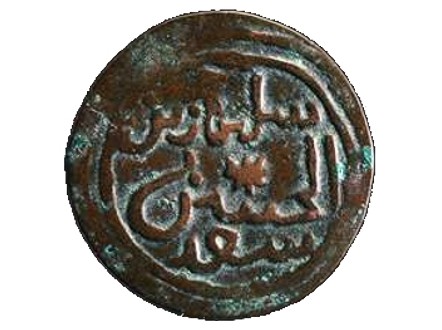June 25, 2013
Ancient African coins that could change history of Australia
(CNN) — Can a handful of ancient copper coins from a once-opulent but now abandoned corner of East Africa change what we know about Australian history?
A team of researchers is on a mission to find out.
With its glittering wealth, busy harbor and coral stone buildings, the island of Kilwa rose to become the premier commercial post of coastal East Africa around the 1300s, controlling much of the Indian Ocean trade with the continent’s hinterland.
Situated in present-day southern Tanzania, during its heyday Kilwa hosted traders from as far away as China, who would exchange gold, ivory and iron from southern Africa’s interior for Arabian pottery and Indian textiles as well as perfumes, porcelains and spices from the Far East.
- NewsRescue– Timbuktu- Journey From World Richest Nations, Voyaging To The Americas Before Columbus, To Poorest
But the Kilwa sultanate’s heyday came to a crashing end in the early 1500s with the arrival of the Portuguese who sacked the city in their bid to dominate the trade routes between eastern Africa and India.
From then on, Kilwa never managed to recover its greatness. With its trading network gradually eclipsing, the once flourishing city started to decline in importance. It was eventually deserted in the 19th century, its crumbling, UNESCO-protected ruins offering today a glimpse of its glorious past.
But interest in this nearly forgotten East African city has resurfaced lately thanks to the mystery surrounding a remarkable discovery thousands of miles away, in a long-abandoned, remote chain of small islands near Australia’s Northern Territory.
Astonishing discovery
Back in 1944, an Australian soldier named Maurie Isenberg was assigned to one of the uninhabited but strategically positioned Wessel Islands to man a radar station. One day, whilst fishing on the beach during his spare time, he discovered nine coins buried in the sand. Isenberg stored them in a tin until 1979, when he wondered if they might be worth something and sent them to be identified.
Four of the coins were found to belong to the Dutch East Company, with one of them being from the late 17th century.
- NewsRescue- World’s First University: Timbuktu
But the rest of them were identified as originating from Kilwa, believed to date back to the 1100s. The sultanate started minting its own currency in the 11th century.
“It’s a very fascinating discovery,” says Ian McIntosh, an Indiana University-Purdue University Indianapolis anthropologist.
“Kilwa coins have only ever been found outside of the Kilwa region on two occasions,” he explains.
“A single coin was found in the ruins of great Zimbabwe and one coin was found in the Arabian Peninsula, in what is now Oman, but nowhere else. And yet, here is this handful of them in northern Australia, this is the astonishing thing.”
Re-write history?
According to history textbooks, Aboriginal explorers arrived in Australia from Asia at least 60,000 years ago. The first European widely known to have set foot on the continent was Dutch navigator Willem Janszoon in 1606, more than 160 years before captain James Cook arrived at Australia’s south-eastern coast to claim the territory for the British empire.
So how did the five coins from distant Kilwa wind up in the isolated Wessel Islands? Was a shipwreck involved? Could it be that the Portuguese, who had looted Kilwa in 1505, reached the Australian shores with coins from East Africa in their possession? Or was it that Kilwan sailors, renowned as expert navigators all across the sea route between China and Africa, were hired by traders from the Far East to navigate their dhows?
- NewsRescue- When We Ruled: Africa’s Reign
“This is an initial survey; if we find something then we’ll prepare for a more detailed and focused exploration in specific areas,” says the Australian professor. “We are interested in a more accurate portrayal of Australian history that is currently allowed in textbooks.”





